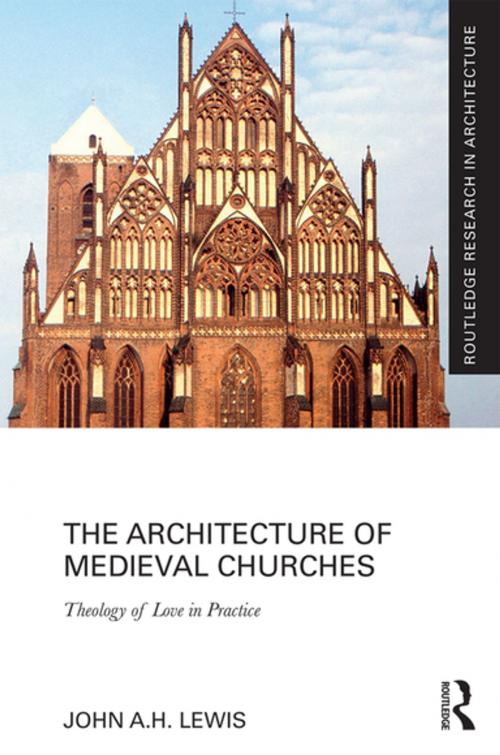The Architecture of Medieval Churches
Theology of Love in Practice
Nonfiction, Art & Architecture, Architecture, Public, Commercial, or Industrial Buildings, History| Author: | John A.H. Lewis | ISBN: | 9781351796040 |
| Publisher: | Taylor and Francis | Publication: | November 20, 2017 |
| Imprint: | Routledge | Language: | English |
| Author: | John A.H. Lewis |
| ISBN: | 9781351796040 |
| Publisher: | Taylor and Francis |
| Publication: | November 20, 2017 |
| Imprint: | Routledge |
| Language: | English |
The Architecture of Medieval Churches investigates the impact of affective theology on architecture and artefacts, focusing on the Middle Ages as a period of high achievement of this synthesis. It explores aspects of medieval church and cathedral architecture in relation to the contemporary metaphysics and theology, which articulated an integrated theocentric culture, architecture, and art. Three modes of attention: comprehension, instruction, and contemplation, informed the builders’ intuition and intention. The book’s central premise reasons that love for God was the critical force in the creation of vernacular church architecture, using a selection of medieval writings to provide a unique critique of the genius of architecture and art during this period. An interdisciplinary study between architecture, theology, and philosophy, it will appeal to academics and researchers in these fields.
The Architecture of Medieval Churches investigates the impact of affective theology on architecture and artefacts, focusing on the Middle Ages as a period of high achievement of this synthesis. It explores aspects of medieval church and cathedral architecture in relation to the contemporary metaphysics and theology, which articulated an integrated theocentric culture, architecture, and art. Three modes of attention: comprehension, instruction, and contemplation, informed the builders’ intuition and intention. The book’s central premise reasons that love for God was the critical force in the creation of vernacular church architecture, using a selection of medieval writings to provide a unique critique of the genius of architecture and art during this period. An interdisciplinary study between architecture, theology, and philosophy, it will appeal to academics and researchers in these fields.















